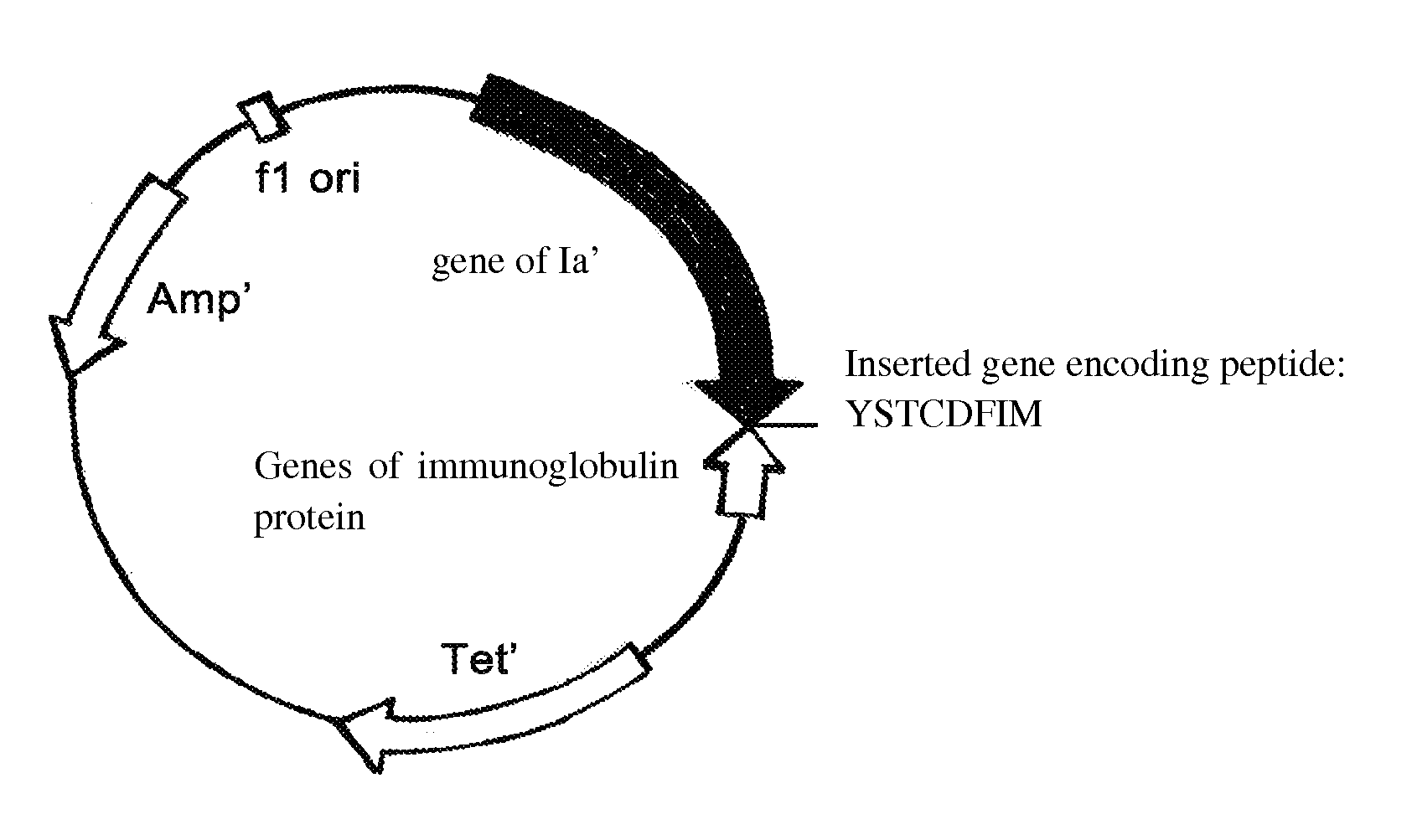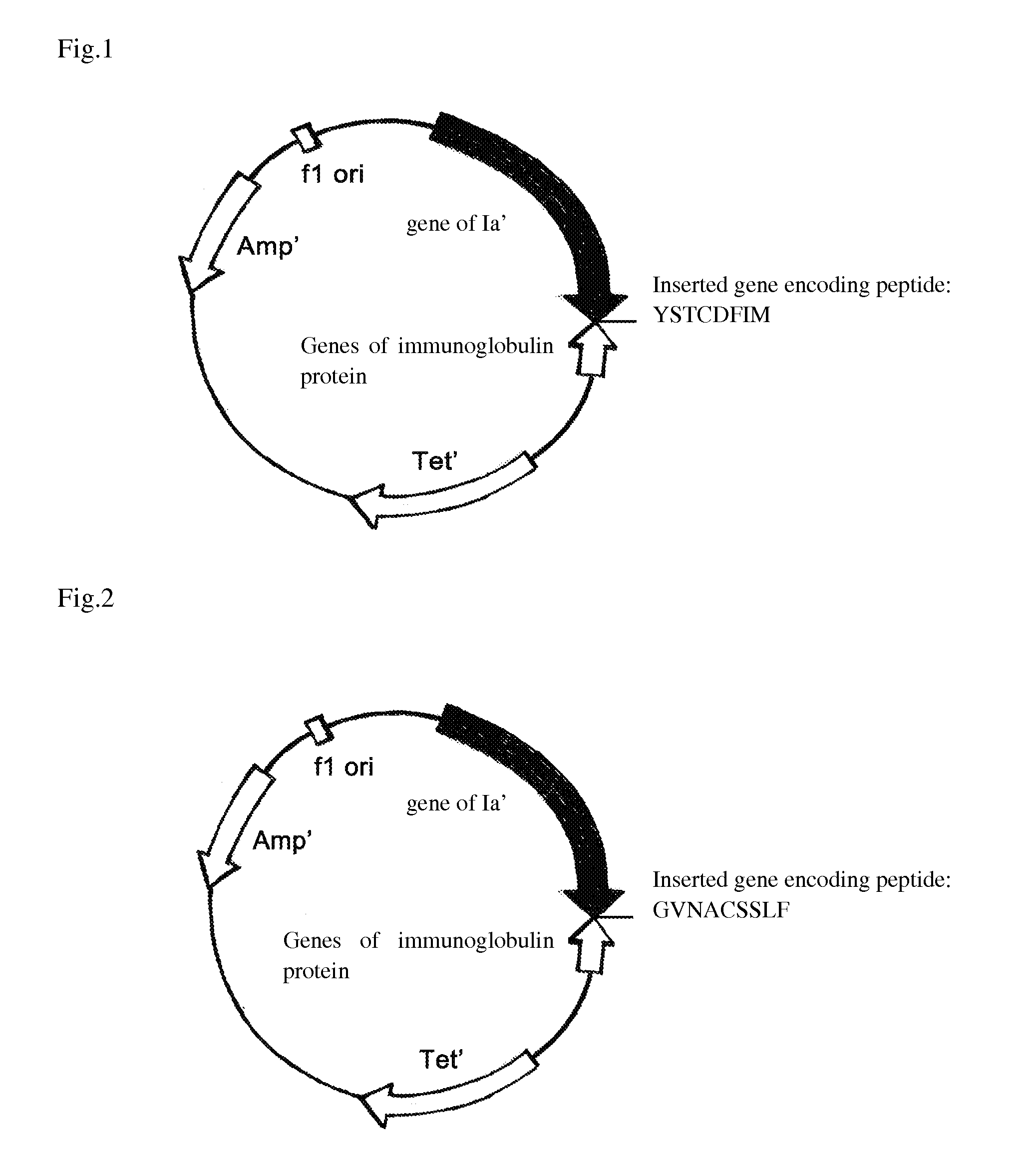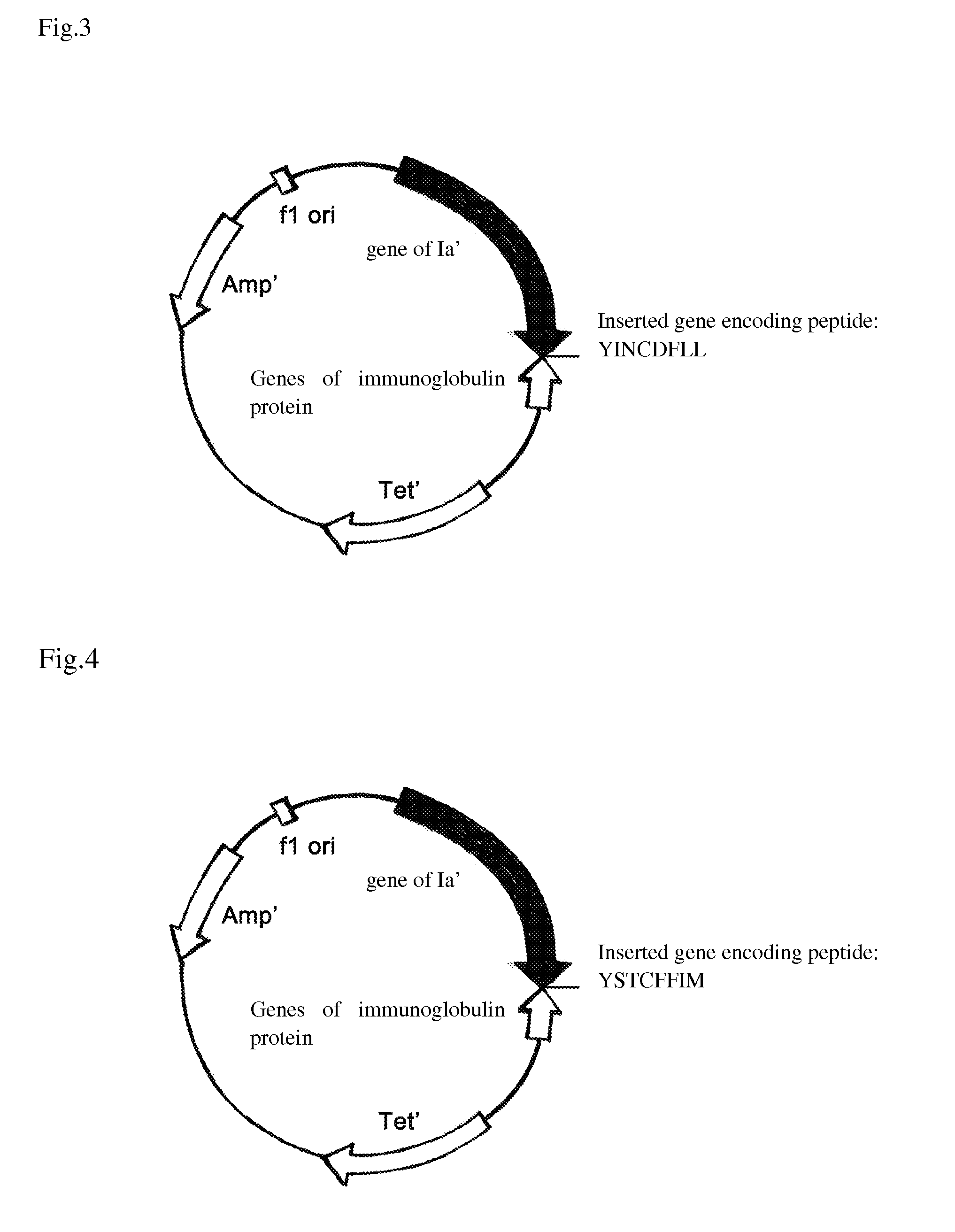Antibiotic, its nucleotide sequence, methods of construction and uses thereof
a technology of nucleotide sequence and antibiotic, applied in the field of biology and medicine, can solve the problems of abnormal and extravagant immune response, antibiotics would likely be completely failed in 10 or 20 years, etc., and achieve the effects of reducing intake and change of drug action site, reducing inability to bind to antibiotics, and wonderful bactericidal
- Summary
- Abstract
- Description
- Claims
- Application Information
AI Technical Summary
Benefits of technology
Problems solved by technology
Method used
Image
Examples
embodiment 1
Construction of Plasmid Expressing the Novel Antibiotics and Preparation of the Novel Antibiotic
[0041]The original plasmid was pSELECT™-1 plasmid (8.3 kb) (purchased from Promega Corporation), which was cloned genes of allosteric colicin peptide Ia′ (set forth in SEQ ID NO. 11) and immunity protein at its multiple clone site. By Double Strands Oligonucleotide Point Mutation Technology (QuickChange™ Kit, Strategene corporation), the genes of pheromone of Stapylococcus set forth in SEQ ID NO 1, 3, 5, 7 and 9 were introduced following the codon of I626 amino-acid residue of Ia′ respectively to form a series of recombinant plasmids, herein referred as pBHC-SA1, pBHC-SA2, pBHC-SA3, pBHC-SA4 and pBHC-SE shown in FIG. 1-5, which are capable of expressing novel antibiotics. While, the peptide of pheromone AgrD I with amino acid sequence set forth in SEQ ID No. 1 was introduced in front of the codon of 1st amino-acid residue of Ia′ to form the recombinant plasmid pBHC-PA as shown in FIG. 6. ...
embodiment 2
Inhibiting Effect of the Novel Antibiotics on Penicillin Sensitive Staphylococcus aureus
[0045]The bacterium was United States Reference Culture ATCC 25923 penicillin-sensitive Staphylococcus aureus. 2 microlitre of bacteria solution (105CFU / ml) was added into 10 ml culture solution containing 1% tryptone, 1% NaCl, 0.5% yeast extract, 0.5% glucose and 0.1% K2HPO4, totally prepared six groups. The first group as control was added 0.3M NaCl+50 mM boric acid buffer fluid (i.e. blank preservative fluid for novel antibiotic, wild-type colicin Ia and protein produced by BL-21 engineering bacteria without plasmid, by the same volumes of antibiosis polypeptide liquid in the experimental group, the second group was added penicillin G sodium by 100 ng / ml, the third group was added wild-type colicin Ia by 100 ng / ml, the fourth group was added protein produced by BL-21 engineering bacteria without plasmid by 100 ng / ml, the fifth group was added recombinant protein that C-terminus of colicin Ia ...
embodiment 3
Transmission Electron Microscope Observations of the Bactericidal Effect of the Novel Antibiotic PMC-SA1 on Methicillin-Resistant Staphylococcus aureus (ATCC BAA-42) (Dyed by 1% Phospho-Wolframic Acid, Magnified by 25,000 Folds)
[0047]Culture solution: 1% tryptone, 1% NaCl, 0.5% yeast extract, 0.5% glucose, 0.1% K2HPO4.
[0048]Con: control group, the bacterium was added to the above culture solution and proper amount of 0.3 M NaCl+50 mM boric acid buffer solution, 200 rpm, grew at 37° C. for 2 hours, and the bacterial appearance was still regular;
[0049]Oxa: the bacterium was added to the above culture solution with 500 μg / ml Oxacillin, 200 rpm, grew at 37° C. for 1.5 hours, the colour as well as appearance of the bacterium had changed, but the thallus was still integrated;
[0050]PMC: the bacterium was added to the above culture solution with 10 μg / ml PMC-SA1 for 0.5 hours. And then the bacterium ruptured and leaked out its contents.
[0051]As shown in FIG. 9, the sterilize mechanism of th...
PUM
| Property | Measurement | Unit |
|---|---|---|
| concentration | aaaaa | aaaaa |
| concentration | aaaaa | aaaaa |
| pH | aaaaa | aaaaa |
Abstract
Description
Claims
Application Information
 Login to View More
Login to View More - R&D
- Intellectual Property
- Life Sciences
- Materials
- Tech Scout
- Unparalleled Data Quality
- Higher Quality Content
- 60% Fewer Hallucinations
Browse by: Latest US Patents, China's latest patents, Technical Efficacy Thesaurus, Application Domain, Technology Topic, Popular Technical Reports.
© 2025 PatSnap. All rights reserved.Legal|Privacy policy|Modern Slavery Act Transparency Statement|Sitemap|About US| Contact US: help@patsnap.com



